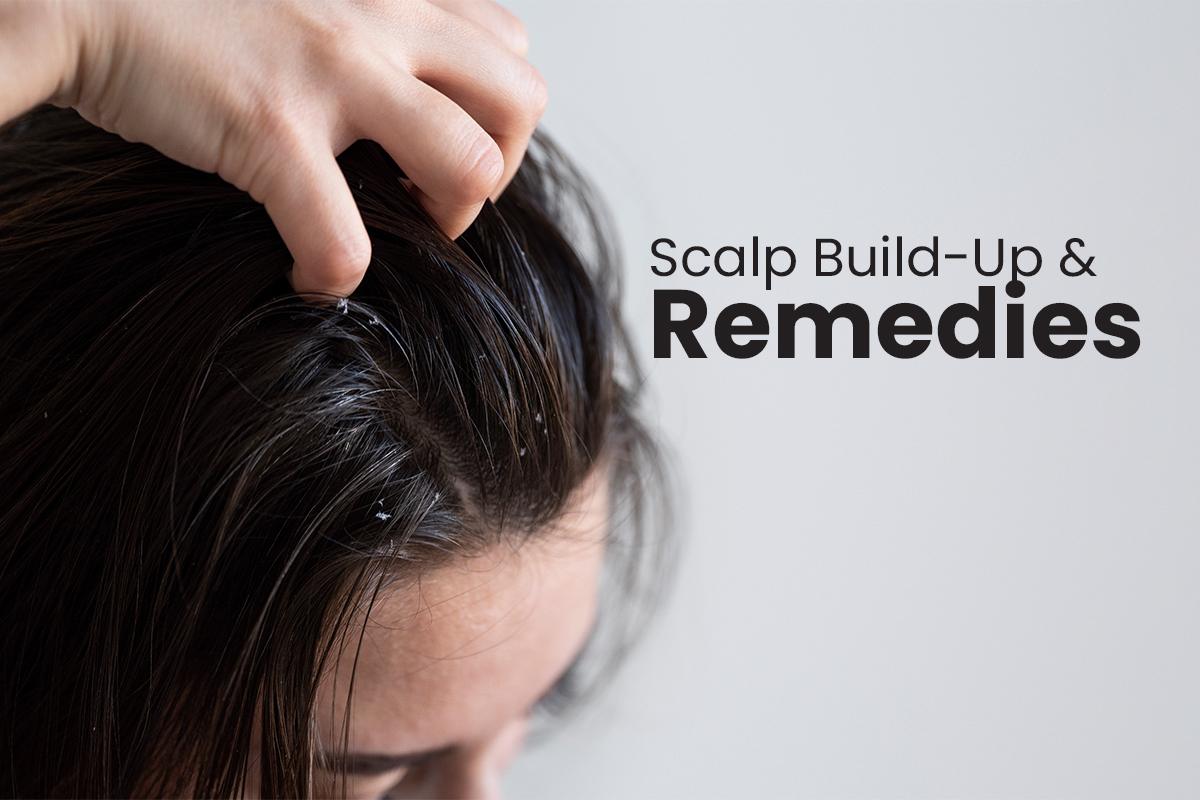
Discover Natural Beauty Tips
Scalp Build-Up & Remedies

During summer, temperatures in our country often feel more uncomfortable compared to other parts of the world. The primary reason for this discomfort is the excessive humidity. Additionally, the hot weather causes our hair to become sweaty. When sweat remains on the scalp for an extended period, it traps dirt, leading to irritation. This can result in the formation of a mud-like layer on the scalp, commonly known as scalp build-up.
What is scalp build-up?
Scalp build-up refers to the accumulation of dirt, oil, dead skin cells, and residues from hair care products, forming a noticeable layer, especially when the scalp becomes sweaty. This condition arises from two main causes: improper use of hair care products and natural factors. While oils, shampoos, conditioners, and hair masks are used to maintain clean and beautiful hair, failing to rinse them thoroughly often leaves residues on the scalp. Additionally, sweating—a natural process for regulating body temperature—can trap dirt on the scalp, leading to a coating over time. In hot weather, the scalp produces more oil to retain moisture, which, combined with flaky skin or dead cells, worsens the build-up. Fungal infections like dandruff and pimples can also cause intense itching. Vigorous scratching, in turn, triggers excessive sebum production, further contributing to scalp build-up.
Regular hair wash: To remove the dirt throughout the day, keep your hair clean regularly. If you don’t wash your hair properly with water for many days, dirt and oil accumulate on the scalp. Use a suitable shampoo and conditioner 1-2 times a week. The consistency of the conditioner is thicker than the shampoo. If you massage it on the scalp, the scalp can become very oily. Then problems like dandruff start. Use conditioner only on the tips of your hair. Use lukewarm water and gently massage your hair and scalp, then rinse.
Use a clarifying shampoo: A clarifying shampoo is more effective than regular shampoo for addressing scalp build-up, as it contains strong surfactants designed to remove dirt and excess sebum from the hair roots. However, these heavy surfactants can sometimes over-dry the scalp and leave the hair feeling slightly dry. To avoid this, it’s best to use clarifying shampoo only 1-2 times a month.
Scalp exfoliation: Just as we exfoliate our skin to remove dead cells, the scalp also benefits from gentle exfoliation. Mild methods are recommended to avoid irritation. Soft silicone brushes, widely available today, can be used for this purpose. To exfoliate, divide wet hair into sections and gently massage the scalp with the brush, avoiding excessive pressure. Alternatively, you can create a natural exfoliant by mixing ingredients like coconut oil, sugar, lemon juice, or apple cider vinegar and gently massaging it into the scalp. Rinse thoroughly with shampoo and conditioner afterward. This process can be done 1-2 times a week.
Brushing dry hair: Gently brush your hair with a brush or comb while it’s dry. This helps remove a lot of dirt and dead skin cells that accumulate while dry.
Use a scarf or hat: In places with a lot of wind and dust, use a hat or scarf.
Wipe off sweat: Excessive sweating can leave hair damp, and if it stays wet for too long, it attracts more dirt, weakens the hair roots, and contributes to build-up and hair fall. Avoid tying your hair too tightly, and whenever possible, dry your hair promptly when it becomes sweaty.
Don’t leave oil on your hair overnight: Many of us apply oil to their hair overnight before shampooing. However, leaving oil on the scalp for an extended period can clog it, forming a layer that worsens build-up. Instead, apply oil 30 minutes before shampooing and wash it off after 30 minutes.
Dilute your shampoo with water: Rushing through shampooing can leave behind residues, contributing to scalp build-up. To avoid this, dilute the appropriate amount of shampoo with a little water before applying it.
Avoid excessive use of hair serum or oil: Hair serums and oils contain rich conditioning agents that hydrate the hair. However, excessive use can lead to build-up. Apply oil or serum in moderation, adjusting the amount to suit your hair length.
Don’t leave wet towels or clothes on your hair for a long time: Avoid leaving a wet towel or cloth on your hair for an extended time after bathing, as the dampness can lead to build-up. Instead, dry your hair immediately with a towel.
The process of hair growth is characterized by continuous renewal, with new hair follicles actively producing while older ones cease. A well-nourished scalp is fundamental for achieving robust and lustrous hair. If any scalp abnormalities are observed, it is imperative to exercise caution in the selection and application of hair care products.






